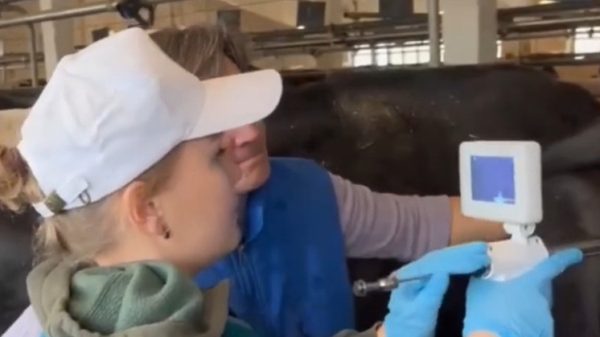'My jaw dropped'
Yellowish-green crystals discovered by chance indicate 'mind-blowing' discovery on Mars, scientists say. The Curiosity rover has made the most unusual discovery on Mars to date: rocks made of pure sulfur. And it all started when a 1-ton rover accidentally ran over a rock and split it, revealing yellowish-green crystals that had never been seen on the red planet before.

“I think this is the weirdest find of the entire mission and the most unexpected,” said Ashwin Vasavada, Curiosity project scientist at NASA's Jet Propulsion Laboratory in Pasadena, California. “I have to say it's a lot of luck. Not every rock has something interesting inside it.”
The Curiosity team was eager for the rover to explore the Gediz Vallis Channel, a winding groove that was likely formed 3 billion years ago by the mixing of flowing water and debris. The channel is cut through a 3-mile-high (5-kilometer) part of Mount Sharp, which the rover has been climbing since 2014, CNN reported.
White rocks were visible in the distance, and mission scientists wanted to get a closer look. JPL's rover drivers, who send instructions to Curiosity, turned 90 degrees to position the robotic explorer so its cameras could capture the mosaic of the surrounding landscape.
On the morning of May 30, Vasavada and his team looked at Curiosity's mosaic and saw rock fragments lying among the rover's tire tracks. A closer look at the rock, he said, revealed a «mind-blowing» find.
Some of Curiosity's discoveries, such as lakes that have existed for millions of years and the presence of organic materials, have influenced the rover's ultimate mission goal: to try to determine whether Mars has conditions suitable for life.
Now, scientists are tasked with figuring out what the presence of pure sulfur on Mars means and what it tells us about the history of the red planet.
As CNN recalls, Curiosity has already found sulfates, or salts containing sulfur, on Mars, which form when water evaporates. The team found traces of bright white calcium sulfate, also known as gypsum, in cracks on the surface of Mars, which are essentially hard water deposits left by ancient groundwater flows.
“Nobody had pure sulfur on their bingo card,” says Ashwin Vasavada.
Sulfur rocks typically have what Vasavada describes as a “beautiful, translucent, crystalline texture,” but weathering on Mars has essentially sandblasted the rocks’ outer surfaces to make them blend in with the rest of the planet, which is mostly shades of orange.
The team was stunned twice, Vasavada said: once when they saw the “gorgeous texture and color inside” of the rock, and then when they used Curiosity’s instruments to analyze the rock and got data indicating it was pure sulfur.
Earlier, while exploring Mars, NASA's Spirit rover broke one of its wheels and had to drag it along while the other five were used to back up. When the wheel was braked, it revealed bright white soil that turned out to be almost pure silica. The presence of silica suggests that Mars once had hot springs or vents that could have created conditions favorable to microbial life, if it ever existed on the planet.
The silica discovery remains one of the most important discoveries from the Spirit rover, which roamed Mars from 2004 to 2011. And Vasavada says it inspired the Curiosity rover team to look over the side — otherwise they wouldn't have seen the powdered sulfur.
“My jaw dropped when I saw the image of sulfur,” said Briony Horgan, a Perseverance rover co-investigator and a professor of planetary science at Purdue University in West Lafayette, Ind. “Pure elemental sulfur is a really weird find because on Earth we mostly find it in places like hydrothermal vents. Think of Yellowstone! So it’s a big mystery to me how this rock formed on Mount Sharp.”
As Curiosity approached the Gediz Vallis channel, it sent back images of an unusual sight: a flat area about half the size of a football field, strewn with bright white, palm-sized rocks.
At first, the team thought the «strange rocks» were part of the channel's debris, perhaps a layer carried by water from higher mountains, Vasavada said.
But upon closer inspection, including the random crushing of the sulfur rock, the team now believes a flat, uniform field of rocks formed where they were found, he said.
The team was eager to collect rock samples to study, but Curiosity couldn't drill into the rocks because they were too small and fragile. To determine what process formed the sulfur rocks, the team examined nearby bedrock.
Pure sulfur only forms on Earth under certain conditions, such as volcanic processes or in hot or cold springs. Depending on the process, different minerals are formed along with the sulfur.
On June 18, the team took a large rock sample from a channel dubbed Mammoth Lakes. Instruments inside the rover analyzed the rock dust and found a greater variety of minerals than ever seen on the mission, Vasavada said.
«The big joke for us was that we saw almost every mineral we'd ever seen on the entire mission, but they were all in this rock,» he said. «It's almost an abundance of riches.»
Since landing on Mars on Aug. 5, 2012, the Curiosity rover has climbed 800 meters (2,600 feet) up the base of Mount Sharp from the floor of Gale Crater. The mountain is the central peak of the crater, which is a vast ancient dry lake bed, CNN notes.
Each layer of Mount Sharp tells a different story about the history of Mars, including periods when the planet was wet and when it became drier.
Recently, Curiosity has been systematically exploring different features of the mountain, such as the Gediz Vallis Channel. The channel formed much later than the mountain because it runs through different layers of Mount Sharp, Vasavada said.
After water and debris carved out a path, they left behind a 2-mile (3.2 km) ridge of boulders and sediment below the channel. Although Curiosity arrived in the Channel in March and will likely remain there for another month or two, it has been steadily rising alongside the debris trail for some time.
Scientists wondered whether floodwaters or landslides were responsible for the debris, and Curiosity's studies showed that both rapid flows and landslides likely played a role. Some of the rocks are rounded like river rocks, suggesting they were carried by water, but others are more angular, meaning they were likely delivered by dry avalanches.
The water then soaked into the debris, and chemical reactions created the «halo» shapes seen on some of the rocks Curiosity studied.
“This wasn't the quietest time on Mars,” said Becky Williams, a scientist at the Planetary Science Institute in Tucson, Arizona, and deputy principal investigator for Curiosity's mast camera. “There was some spectacular activity here. We're seeing a lot of water flowing down the channel, including massive floods and boulder-rich flows.” Scientists want to learn more details, including how much water was present when the channel formed in the first place.”
The Gediz Vallis Canal has long fascinated scientists, including Vasavada, who recalls looking at orbital images of the feature long before Curiosity landed on Mars.
“It was always something that was really intriguing,” he said. “I remember the rover kind of going over the last hill before we got to the canal, and suddenly you could see the landscape and the curved canal. Now we’re actually here, seeing it with our own eyes, so to speak.”
There's no hard evidence yet of how the sulfur formed, but the team continues to analyze the data collected by Curiosity to determine how and when each mineral formed.
«It's possible that this slab of rock has been through a number of different environments,» Vasavada said, «and they're kind of layered on top of each other, and now we have to figure that out.»
Curiosity continues to explore the channel for more surprises, and after it moves off, the rover will head west to follow the mountain instead of straight up to find more interesting geologic features.
Despite 12 years of wear and tear, including some «critical situations» like wheel and mechanical issues, Curiosity remains in great shape, Vasavada said.
«I feel very lucky, but at the same time, we're all afraid that «The next flight may not be a hair's breadth away from destruction, so we're trying to make the most of it, and we have a great landing site,» he said. «I'm glad we chose something that science has been able to do for 12 years.»


























































Свежие комментарии